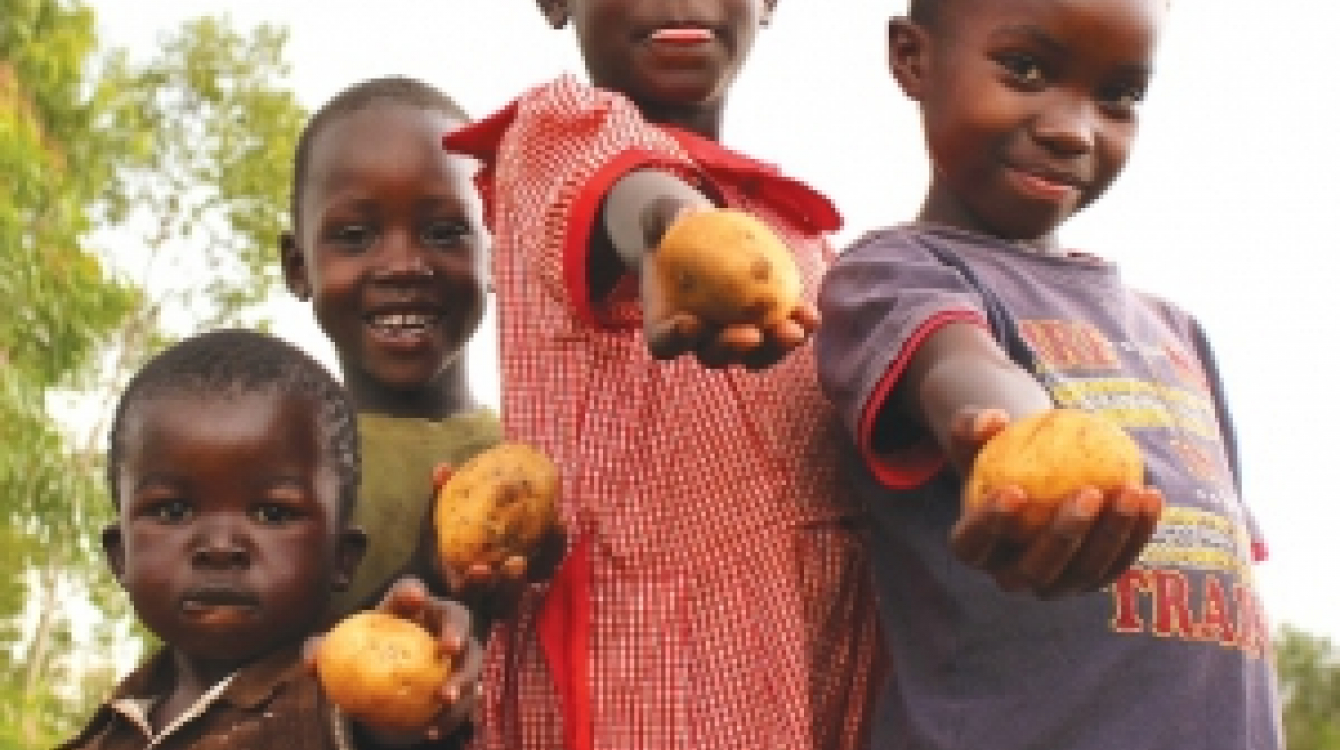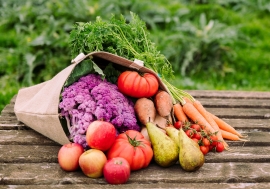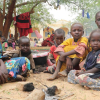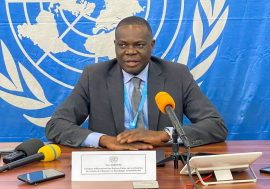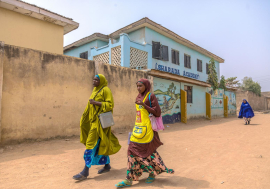Sub-Saharan Africa shows progress in halving the proportion and the number of hungry people by 2015
Sub-Saharan Africa shows progress in halving the proportion and the number of hungry people by 2015
2 June 2015, Accra, Ghana – According to the first edition of the Regional Overview of Food Insecurity in Sub-Saharan Africa (2015), Angola, Djibouti, Cameroon, Gabon, Ghana, Mali and Sao Tome & Principe met both the relevant Millennium Development Goal – that of halving the proportion of the population suffering from undernourishment – and the more stringent World Food Summit target of halving the absolute numbers of the hungry.
West Africa in particular made notable strides, reducing its prevalence of undernourishment (PoU) by 60 percent, from 24.2 percent in 1990-1992 to 9.6 percent in the current 2014-16 assessment period.
“In absolute terms, that’s a reduction of the ranks of the hungry by almost 11 million; a significant progress despite rapid population growth and recurrent droughts in Sahel countries”, said Mr. Bukar Tijani, FAO Assistant Director-General and Regional Representative for Africa, noting that the past quarter century has been a time of “major structural transformation” with vast demographic, economic and political changes for the continent.
“The number of underweight children in Sub-Saharan Africa has declined over the last two decades, while stunting has stagnated and overweight is on the rise among children below five years”, he added.
Progress toward MDG and WFS targets
Around one person in four in Sub-Saharan Africa suffers from undernourishment today, down from one in three 25 years ago.
Despite the progress, considerable scope for improvement remains with respect to the World Food Summit target of reducing the number of hungry people by half.
Indeed, that number rose by approximately 44 million people across Sub-Saharan Africa as a whole since 1990, rising from 176 million to an estimated 220 million today.
That contrasts with the global reduction in the number of hungry people to 795 million people today from 1.011 billion in 1990.
The number of the hungry rose by around 20 percent in Eastern Africa and this has been affected by unfavorable climate and drought conditions, and more than doubled in Central Africa, largely due to civil strife.
Key factors driving the progress
The report briefly presents the successful experiences of some African countries to improve food security and nutrition outcomes through programs, institutional and governance processes and efforts to institute and sustain transformative policies.
“The 2015 Africa report on food insecurity also shows some factors of positive change and progress towards the MDG hunger goal. These multi-faceted and interrelated factors include economic growth, smallholder agriculture productivity, market access, international trade, social protection programming and timely access to information,” said Mr. Bukar Tijani.
The global SOFI report noted that gains in agricultural productivity were critical in reaching the MDG hunger goal on the continent.
The regional report identifies another key factor for Africa is the extent to which countries implemented the Comprehensive Africa Agriculture Development Programme (CAADP), which targets policies promoting the gender and nutrition sensitive farming, environment, water, social protection, and investment arenas.
In that regard, West Africa has performed strongly, and achieved starkly superior results in hunger reduction. Stronger regional integration is one reason: During the last three decades, West African organizations have invested extensively in building regional institutions and human capacities for agricultural development across the area, particularly with respect to food insecurity and malnutrition monitoring and risk mitigation, led by institutions such as the Economic Community of West African States (ECOWAS), the West African Economic and Monetary Union (WAEMU), and the Permanent Interstate Committee for Drought Control in the Sahel (CILSS in French).
The current evolution has contributed to sustained economic growth which has led to substantial improvements in the livelihoods and welfare of millions of Africans.
Related links:
Africa Overview 2015, the Report
AUDIO:
Interview with Bukar Tijani - Assistant Director-General & Regional Representative for Africa
http://www.fao.org/news/audio-video/detail-audio/en/?uid=11176
SOFI 2015 (Global):
SOFI 2015 PowerPoint presentation
For more info:
Liliane Kambirigi | Regional Office for Africa (RAF), Accra, Ghana | Liliane.Kambirigi@fao.org | +233 (0) 26 2324303
Photo Album (Accra, 2 June 2015):


